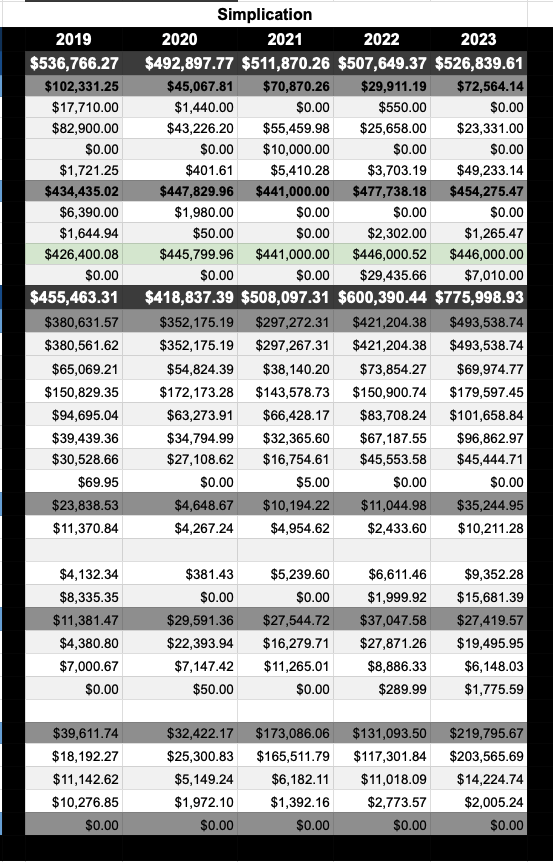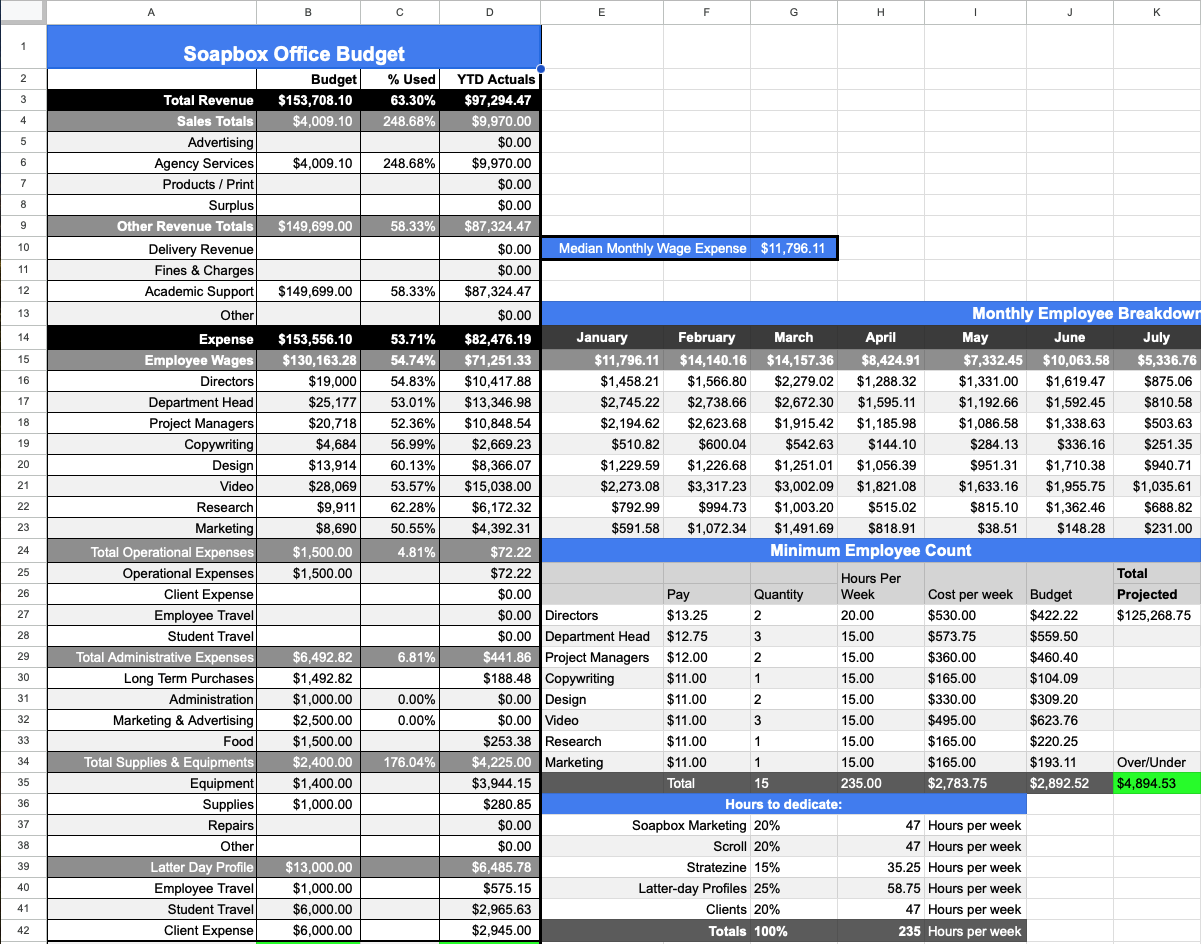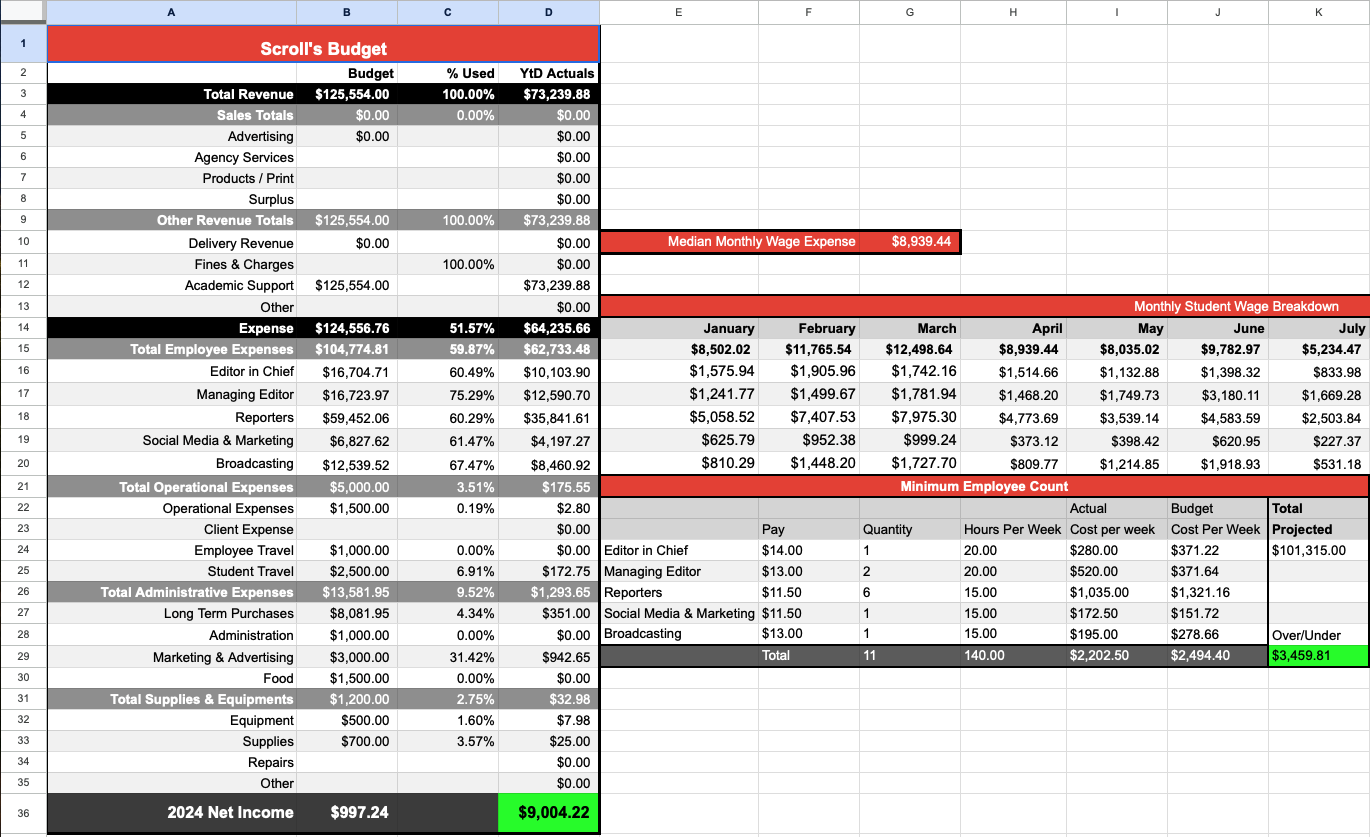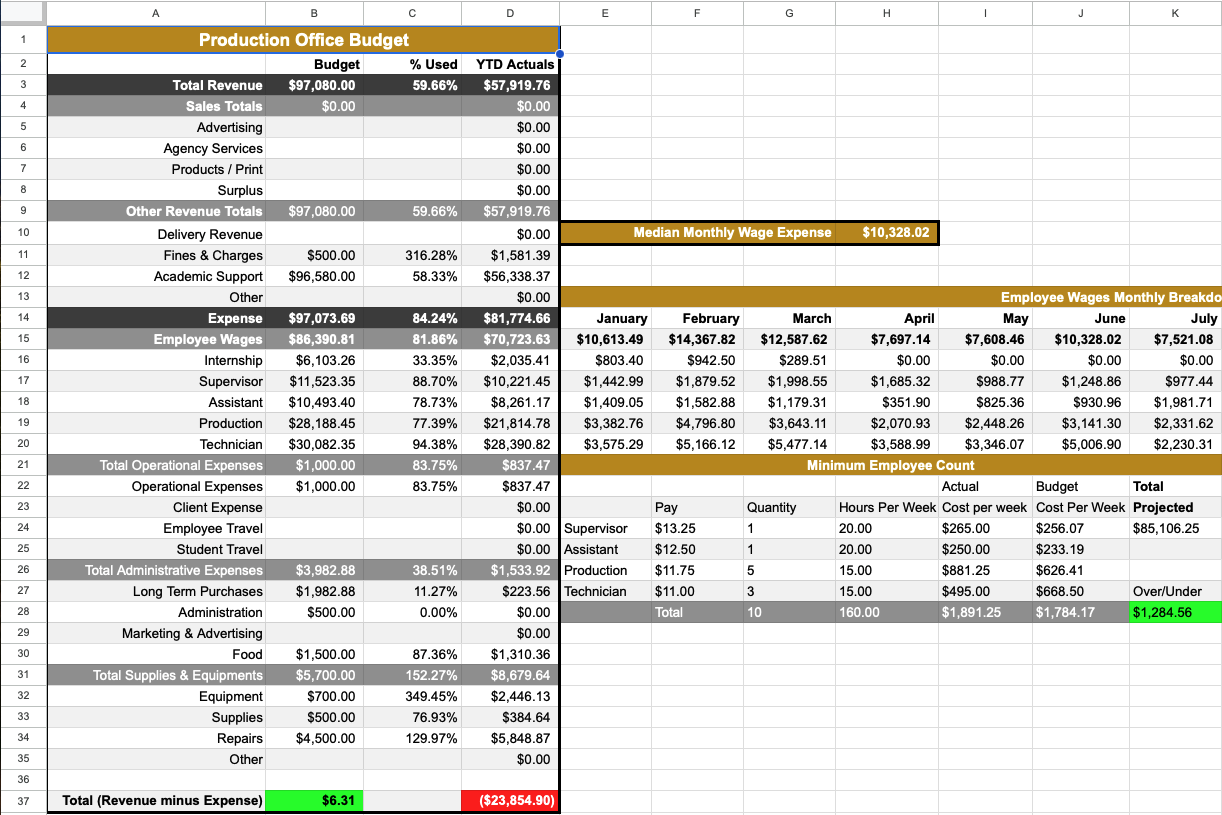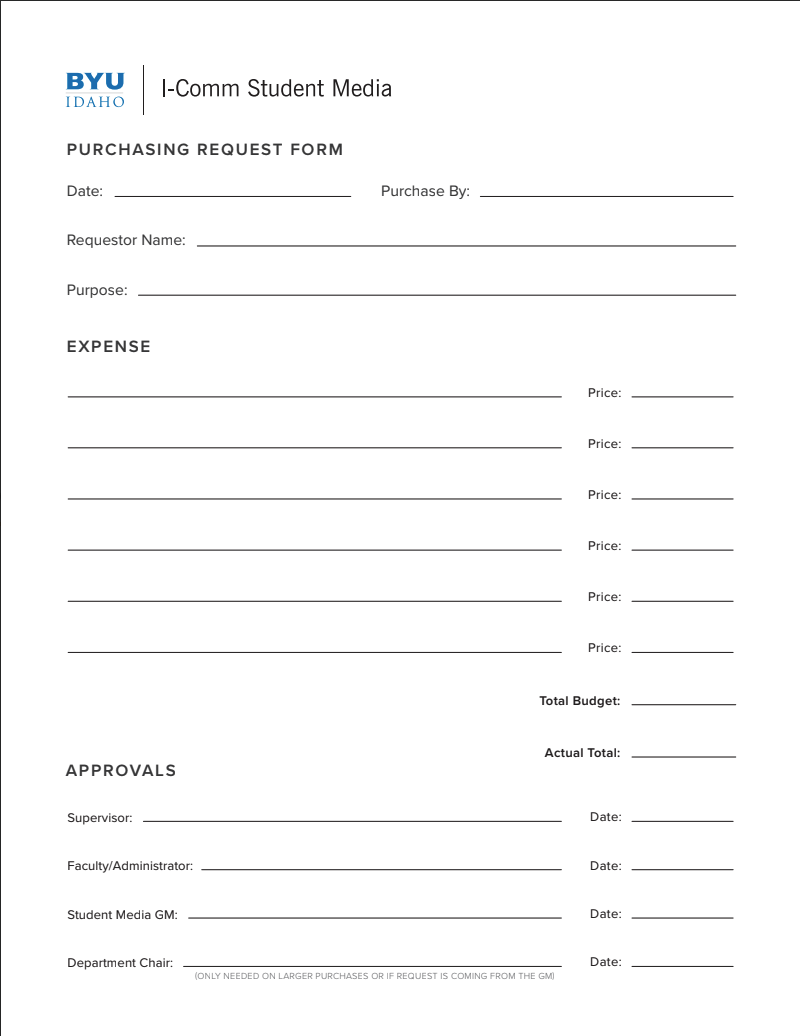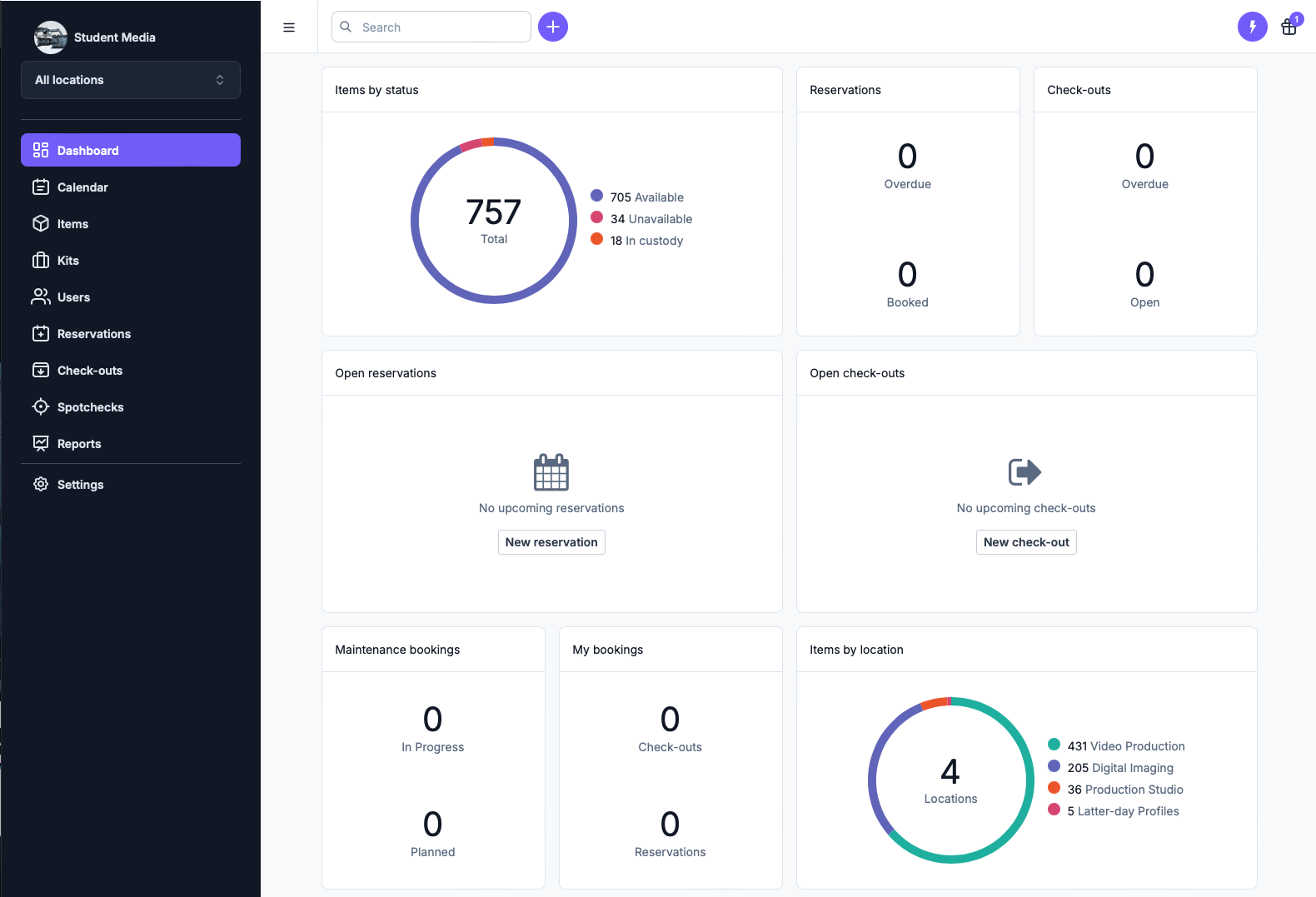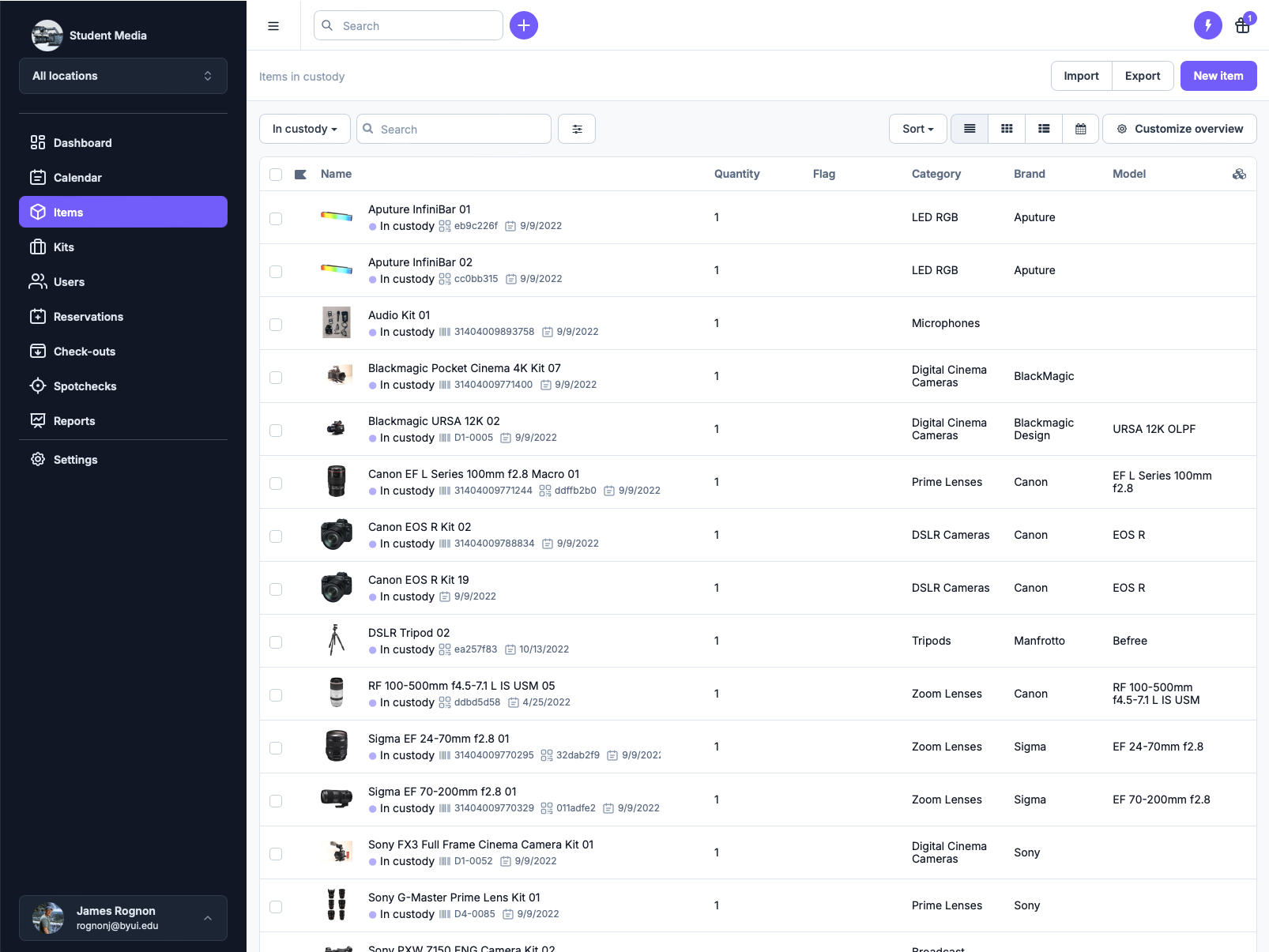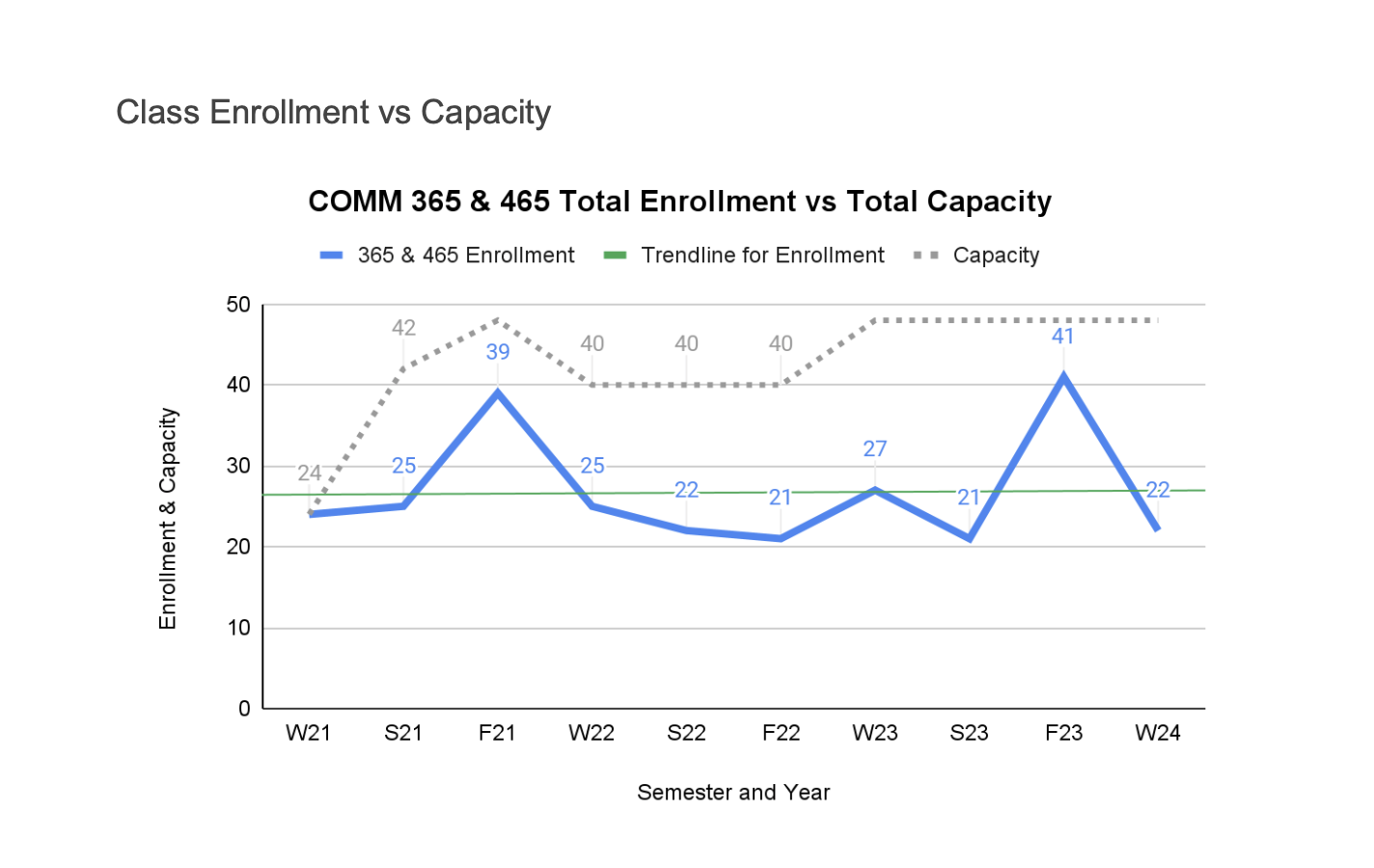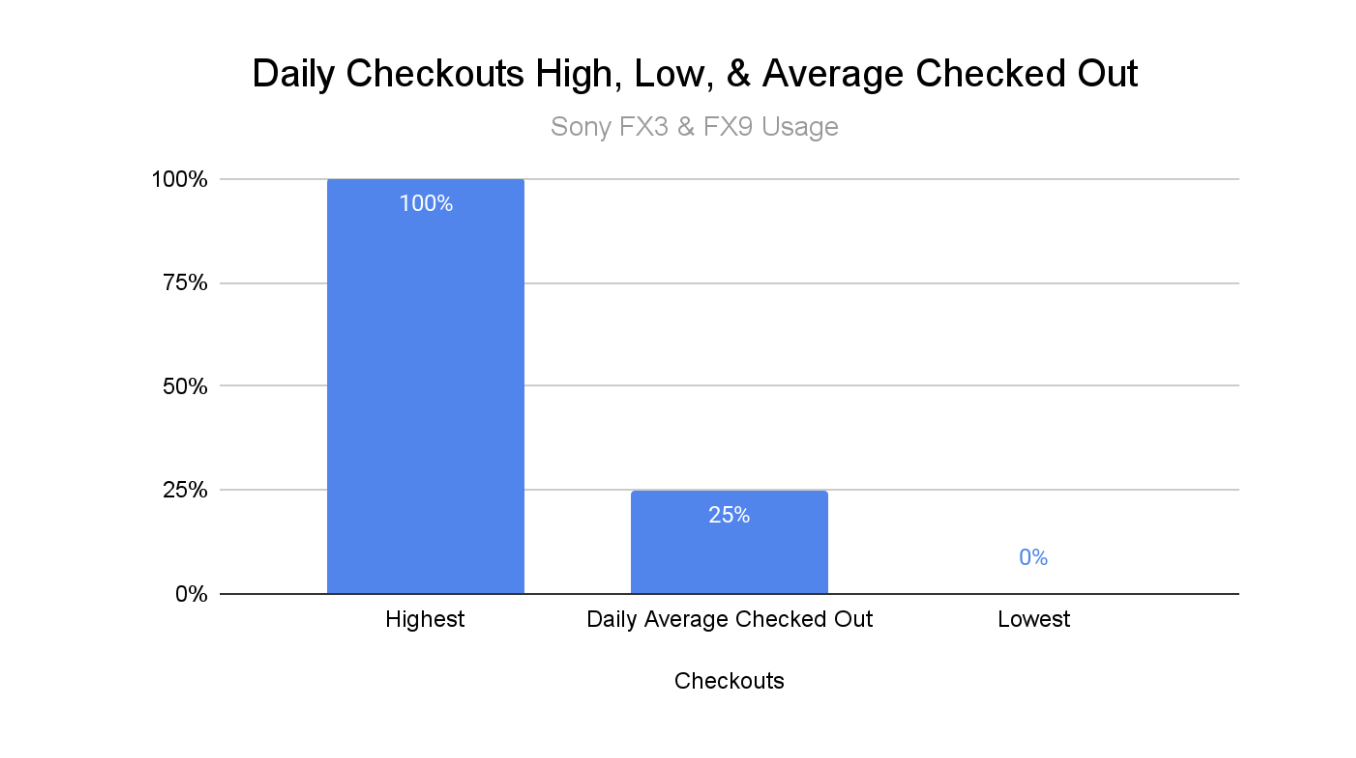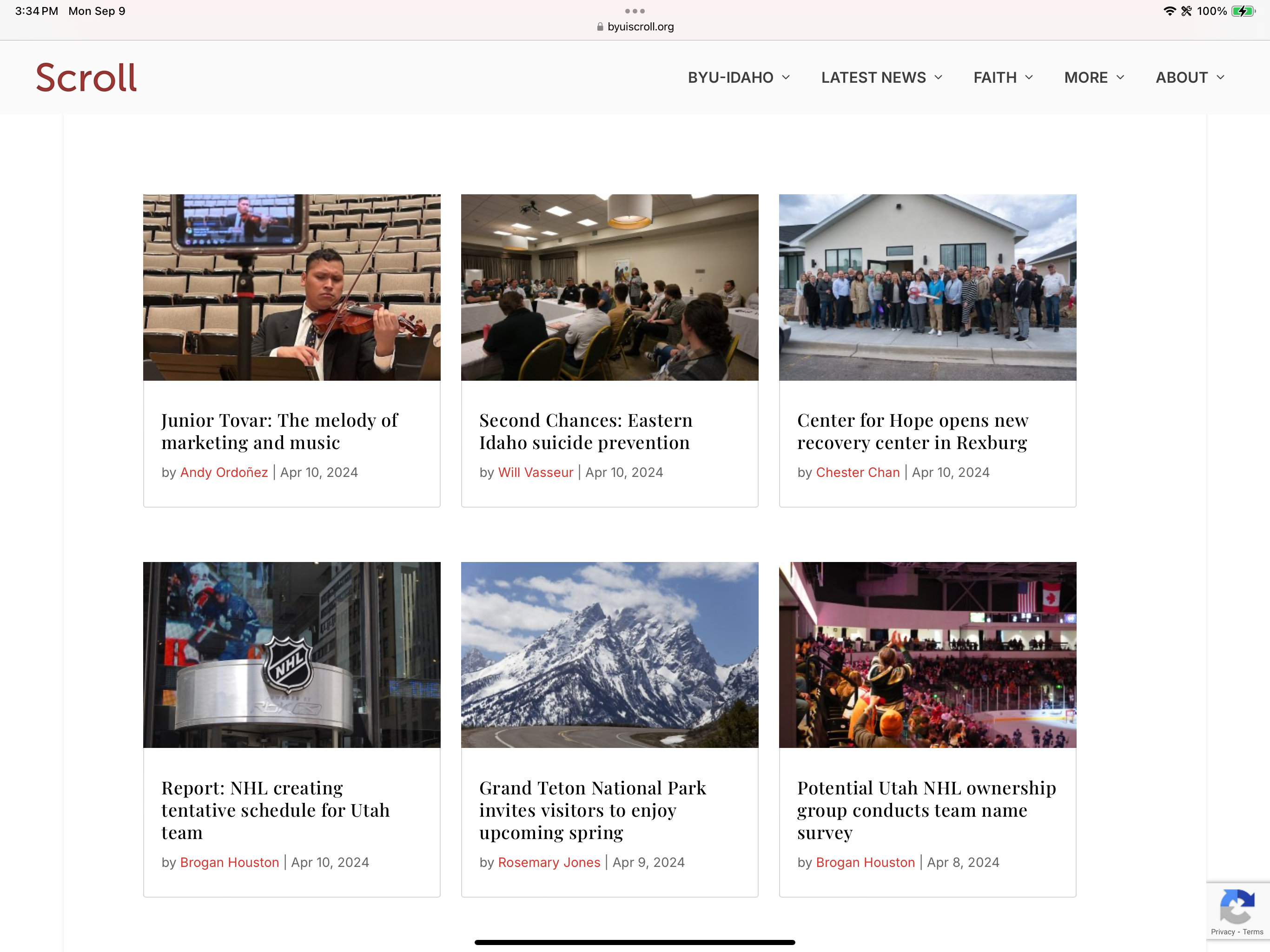Project Details
When I joined BYU-Idaho’s iCOMM, the organization was struggling with a negative net income, operational inefficiencies, and misaligned leadership. Leveraging my expertise in business administration, creative direction, and financial management, I implemented a structured strategy to restore profitability. I led leadership changes, streamlined workflows, established project management systems, set clear budgets, and reintroduced relevant product offerings. Within just three months, these efforts turnaround iCOMM for a long-term sustainability and growth.
Client:
BYU-Idaho Student Media
Problem:
A company is in the red and going deeper.
Challenges:
Building Leadership, Establishing Ownership Culture, Establish Budgets, & Improve Production Quality.
Deliverables:
Company Optimization, Project Management System, & Financial S.O.P.
Skills:
Leadership, Business Administration, Data-Driven Optimization, & Financial Acumen.
Took a -$50k net income to a positive $55k in just 90 days
Background Info
The Company
BYU-Idaho’s Department of Communication runs iCOMM, an umbrella organization that generates revenue through three different avenues:
For years, the Scroll was the top earner, but as the landscape shifted, Soapbox took the lead, followed by the production studio. Despite this, iCOMM had been operating at a deficit for two years—something we only discovered when I was brought in to help. They asked me to step in because of my business and creative director experience and strong relationship with the team.
Phase 1: Define the Problem
Once I dove into the finances and spent time with teams, stakeholders, and clients, it became clear that while Soapbox brought in three times the income of the other two entities, Student Media was still bleeding money. What were the root causes?
Company Net Income
Each group had different income streams and costs, with Soapbox generating the most. Despite this, the company was operating at a negative $50k net income.
Leadership
The general manager struggled to make decisions—primarily due to inexperience, which trickled down to all mid-level managers.
Standard Operating Procedures
No project was hitting all the targets. Timelines were missed, budgets were exceeded, and final outputs didn’t meet expectations. There was no clear structure for getting things done.
Phase 2: Strategy & Approach
Training Program
I believe in empowering people to solve problems themselves. For a month, I worked closely with the iCOMM GM, creating a personalized improvement plan. However, we had to part ways when they failed to meet key milestones.
Taking Over
When I was asked to step in as acting director, my priorities were clear:
Priority 1:
Build Leadership & Ownership Culture
Stronger leadership and accountability were critical. With the full support of leadership, we focused on instilling a sense of ownership across the team.
Priority 2:
Establish Budgets
Spending was out of control. I set clear budgets for each department, ensuring that leadership understood and adhered to the new policies.
Priority 3:
Improve Production Quality
Restructuring and financial fixes wouldn’t matter if the quality of our work didn’t improve as well.
Phase 3: How it went
Priority 1:
Building Leadership
Organizational Structures
Scroll's
Structure & Workflow
Problems
Scroll’s biggest issue was a lack of communication between its three teams: the journalism class, the broadcast class, and the paid staff. This resulted in duplicated efforts, missed publishing deadlines, and confusion in leadership responsibilities. The managing editor, executive producer, and editor-in-chief weren’t on the same page, leading to content bottlenecks and missed opportunities.


New Structure & Workflow
We streamlined the leadership structure, and starting from the bottom, we removed pay discrepancies by having all reporters come from the journalism classes, simplifying workflows. We added roles like desk editors to oversee specific beats, own the content, and improve communication. The copy-editing team was re-positioned to prevent delays, and we added the expectation that content should need minimal copy revisions when it reached that desk. Finally, Soapbox was brought in to help promote Scroll content and drive ad revenue. Within a month, we were producing higher-quality content at a faster rate and eliminated content duplication.
Soapbox's
Structure & Workflow
Problems
Soapbox had too many leaders, no clear project ownership, and a bloated team structure. High turnover with our contract workers and unclear roles led to project delays, budget overages, and missed expectations.
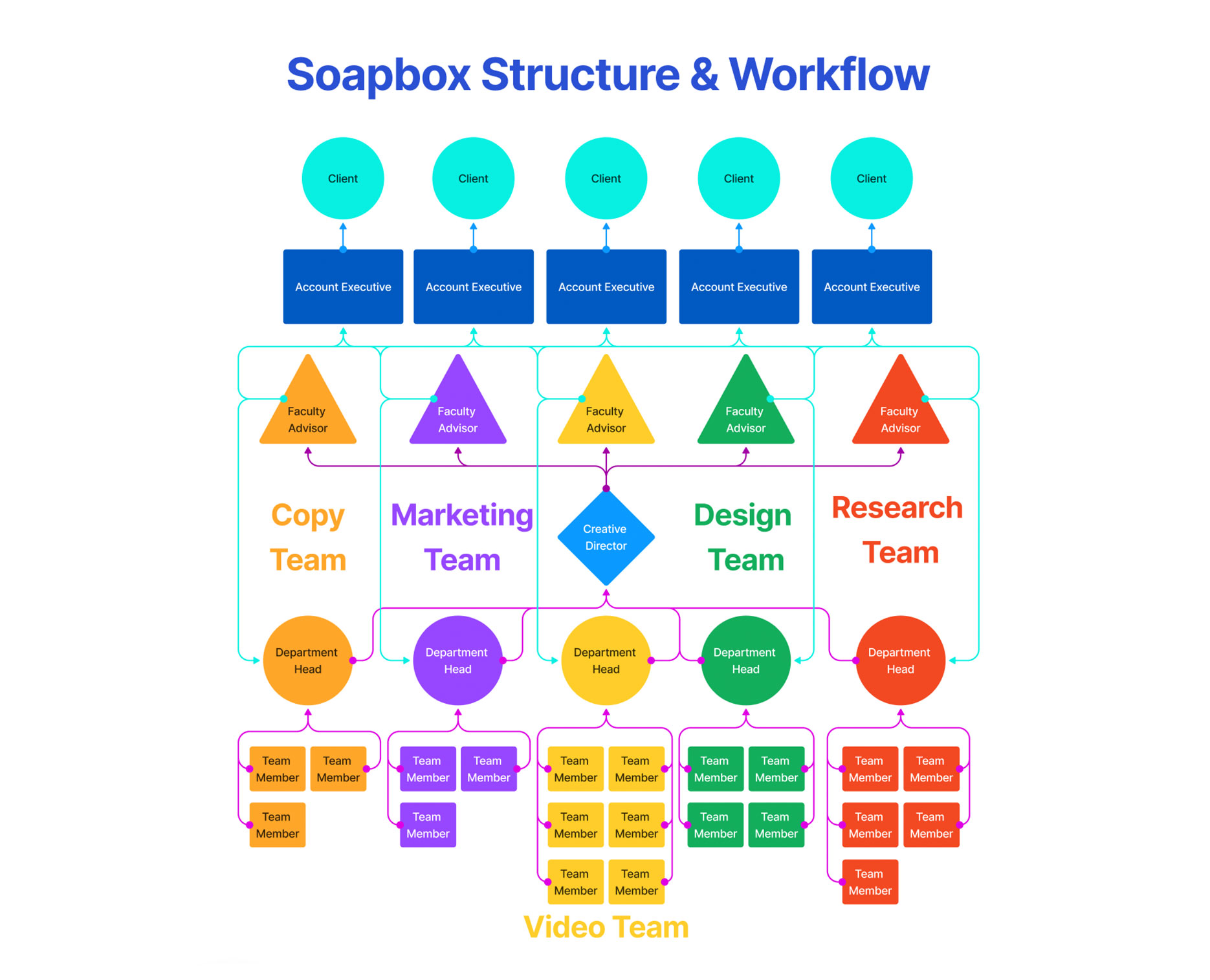

New Structure & Workflow
I simplified the org chart, clarified responsibilities, and required department heads to collaborate more effectively. We reduced the number of team members, giving contract workers more responsibility and transitioning them to full-time roles. This shift improved project oversight, accountability, and execution. Team members were given clear expectations—those on the client-facing side ensured client satisfaction, while the others focused on creative execution. Like Scroll, we saw a positive lift in customer satisfaction, and all projects started with this new process met their deadlines, were under budget, and fulfilled the requests.
Production Studio's
Structure & Workflow
The production studio was over complicated and costly. I delegated organization realignment to the Production Coordinator, who cut costs and improved rental efficiency.


Expectations & Delegation
As mentioned earlier, setting clear expectations and defining areas of authority empowered our leaders and team members to perform, seek improvement, and find satisfaction in their roles.
"Employees thrive when they know the boundaries within which they can operate autonomously and creatively; clear expectations are not just instructions, they are the pillars of workplace happiness"
My Main Components of Delegation
Soapbox and Scroll needed a new project management system. I assigned a team, led by a team lead, to explore Notion and test its capabilities. Here’s how I applied expectations and delegation in this process:
Project Management Systems
Scroll’s
Old System
Scroll used three different platforms for planning, content creation, and communication, which led to inefficiencies:
- Microsoft Teams:
Communications - Google Sheets:
Editorial calendar - Camayak:
Content creation, editing, and publication.
Soapbox's
Old System
Soapbox had used Basecamp for several years. While it’s an industry standard, Soapbox’s high contract worker turnover caused problems with consistency and proper usage. Key issues included:
- Conversations and tasks being lost due to private messaging within Basecamp.
- Multiple places to add files or updates for the same project, leading to notification overload and missed information.
- Each account executive built projects differently, forcing team members to constantly adjust to new setups.
- Limited automation and customization options, making it difficult to streamline processes or use project templates.
One New
Project Management System
As sister companies, it made sense to unify Scroll and Soapbox under a single system that met both teams’ needs. After thorough research, I selected Notion for its ability to:
- Simplify project management
- Create a unified editorial calendar
- Manage content creation, editing, and publishing
- Build customized templates
- Use automations and notifications
- Incorporate communication
Priority 2:
Establishing Budgets
Building a 5 Year Comparison
I reviewed iCOMM’s last five years of financial data to build a forecast and create an annual budget for each program. These changes, along with new workflows and system updates, were designed to increase efficiency and net income.
Individual Budgets
After comparing the data, I built yearly budgets for each program.
Transparency
Previously, budget details were kept secret, leading to confusion. To address this, I created a transparent system using Google Sheets and Slides, allowing stakeholders to view budgets, revenue comparisons, expenses, and headcounts. This approach gave everyone a clearer understanding of how we were managing finances.
Key Sections of the Budget Presentations:
- Quick Overview:
Total revenue, expenses, and net income. - Revenue:
Year-to-date actual vs. forecast. - Expenses:
Year-to-date actual vs. forecast. - Headcount:
Current employee numbers vs. budget limits.

Expense Requests
Once the budgets were finalized, I implemented an approval process to better manage expenses. Every purchase now required a purchase request form, which immediately stopped unapproved spending by both employees and leadership.
Equipment Purchases
Our largest expense was rental equipment, with $486,379 spent on camera gear alone over three years. When we submitted a $358,500 stewardship request for new equipment, I analyzed rental history using Cheqroom software, looking at trends to justify this need.
Rental Analysis
Using rental software, I tracked equipment usage, looking at checkout trends over the past three years. This analysis provided a clear picture of demand, helping us justify a final equipment request of $81,640.92. The data-driven approach allowed us to reduce unnecessary purchases and eliminated equipment expenses for the year.
The Final Request
After a number of discussions with key stakeholders and leadership, we landed on a $81,640.92 request. We incorporated the rental data and other justification based on industry standards. The request was accepted and it eliminated iCOMM’s equipment purchases for the year.
Other Expenses to Address
Rental Repairs
The production office policy on rental equipment repairs was inconsistently enforced, leading to unnecessary expenses. By aligning expectations and holding staff accountable, we cut repair costs by 75%.
Travel Expenses
Teams were frequently overspending on travel by sending more personnel than necessary. After evaluating each project and streamlining team sizes, we reduced a typical $15,550 budget to $8,950, cutting travel expenses by 50%.
Software Changes
Scroll was using Camayak, which cost $7,416 per year. By transitioning to Notion, we eliminated this expense while improving efficiency. Overall, the software changes saved iCOMM over $10,000 annually and enhanced collaboration.
Priority 3:
Improve Production Quality
With the structure, processes, and financial efficiency in place, our next priority was to enhance production quality. It was crucial that as we streamlined operations, our output continued to meet and exceed expectations, aligning with our goal of delivering superior results.
Writing Toward an Audience
As a campus newspaper since 1905, Scroll struggled to adapt to changes in media consumption. Previously, it aimed to be a regional news outlet, but the primary audience—BYUI students—wasn’t interested in this type of content.
Our focus shifted to creating content specifically for the student body. We tailored articles to meet student interests, such as:
- Top 10 weekly food deals
- The best places to study on campus
- Best and worst first dates
- “Overheard at BYUI”
This pivot helped Scroll reconnect with its core audience.
Printed Paper
Scroll had stopped printing its paper in recent years, causing a drop in revenue as advertisers were hesitant to transition online. I reintroduced the printed paper, producing a monthly edition that aligned better with student interests. We sold out ad space within two weeks, and the entire print run was consumed shortly after distribution.
Project Management
Project management had been a significant struggle for Soapbox. Project managers lacked adequate training, standards weren’t upheld, and team members didn’t fully support the role. I developed a month-long training program for leadership, who then passed those principles down to their teams.
After the training, we saw noticeable improvements in efficiency. With a clearer understanding of their roles and better collaboration, our clients started to recognize the change:
"This has been a great relationship, and I realized we should have come to you for all our projects."
Quality Control
We refined the project management process by incorporating key steps, such as strategy and ideation, into every project. We also ensured internal reviews and revisions were properly accounted for, instead of rushed due to deadlines. These changes had a significant positive impact on production quality.
Turnaround Time
The equipment turnaround process used to take 18 hours, with four employees required to check in and prepare each piece. This wasn’t a major issue for most equipment, but some high-demand items needed to be ready in hours.
I asked the production coordinator to streamline the process, reducing it to two employees and eliminating the need for team leader approval. We brought the turnaround time down to just one hour, improving overall efficiency.
Utilizing Studio Space
The production office had a $2 million studio that was underutilized, primarily reserved for journalism classes and a few Soapbox projects. To maximize its potential, we began offering:
- Podcasts
- Video podcasts
- Studio photography and videography
We also launched our own video podcasts with the goal of generating revenue over time.
The Results
Through Strategic Improvements
By implementing streamlined processes, improving leadership, and focusing on production quality, we transformed iCOMM’s operations. The introduction of a unified project management system increased efficiency, while better training and clear delegation led to more cohesive teams and improved client satisfaction. As a result the different programs experienced:








